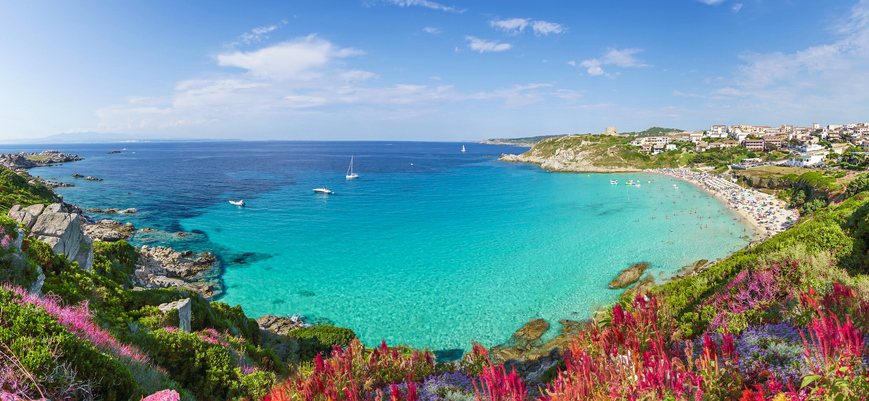The stunning island of Sardinia boasts nearly 1200 miles of coastline and is a beach-lover’s paradise. Due to their white sand, many of Sardinia’s beaches rank in the top ten most beautiful beaches in Italy, if not Europe. Add to this the crystal-clear azure seas and it’s not hard to see why people flock to Sardinia during the summer months. Unfortunately, this popularity does have a downside and the best-known spots can get very busy in high season. This has led to the introduction of certain rules imposed to protect the beaches and limit anti-social behavior. We will tell you what to look out for as well as which beaches are the best, including some hidden gems where you should be able to avoid the crowds.
Sardinian beach rules
Sardinian beaches are famed for their white sand, tiny grains of quartz. Unsurprisingly, the local authorities are keen to protect their pristine beaches and many have recently introduced a “no towel” rule, the fear being that the precious grains get caught up in towels and are taken away in large numbers over the course of a summer season. The alternative? Many beaches now have an enforced “sand mat” policy. Beach-goers are required to sit on reusable sand mats, which are thought to trap less sand, or to bring collapsible loungers if there are no loungers nearby to rent. If you don’t have a sand mat with you, you will usually have the opportunity to buy one. Anyone flouting this ban risks a fine. Visitors should also remember that if they’re caught removing sand as a souvenir, they risk a heavy fine.
Due to ever-rising tourist numbers, there has also been a move in Sardinia to limit numbers on the island’s beaches to protect the natural environment and combat overtourism. Two beaches in the beautiful La Maddalena archipelago, Cala Coticcio and Cala Brigantina, now have restricted access. Only 60 people per day will be permitted to visit over the summer, with travelers needing to book their slot online and access the beaches in question with a local guide. Other beaches where limits on visitor numbers have been introduced will have staff stationed at car parks and beach access points to check tickets. The best advice is to plan ahead and check with your tour contact.
Best beaches in Sardinia
One of the most famous beaches in Sardinia is La Pelosa beach near Stintino in the north. With sand and sea unrivalled even in the Caribbean, it can get very busy in summer, so we recommend visiting out of season, in May or September. Another white sand beach, this time in the east of the island, Cala Brandinchi boasts warm, shallow water and a bar serving drinks and snacks, making it a firm favorite among families with young children. Some of Sardinia’s most beautiful beaches are not accessible by road, inevitably making them less popular and more secluded. Cala Goloritzè can be reached with an hour-and-a-half hike, or, our preferred option, by sea, giving you the opportunity to enjoy a private motorboat transfer. Finally, the beaches of the Costa Verde on Sardinia’s west coast are often peaceful due to their size—extending for around 5 miles, these beaches are part of a UNESCO World Heritage site.
Italian beach etiquette
Italian beaches are usually divided into public and private sections. Public beaches are free, but you risk a fine if you try to save yourself a spot overnight. Private beaches require payment, but your fee will get you a beach umbrella and two loungers for the day, as well as the use of any bar/restaurant/toilet facilities. Private beaches are kept litter free and you may feel more comfortable leaving your belongings while you take a dip.
Nudity is frowned upon on Italian beaches unless you are in a designated nudist area. Drinking alcohol on beaches in Italy is perfectly legal and acceptable, however. Just remember to take any empty containers or other litter with you when you leave.

